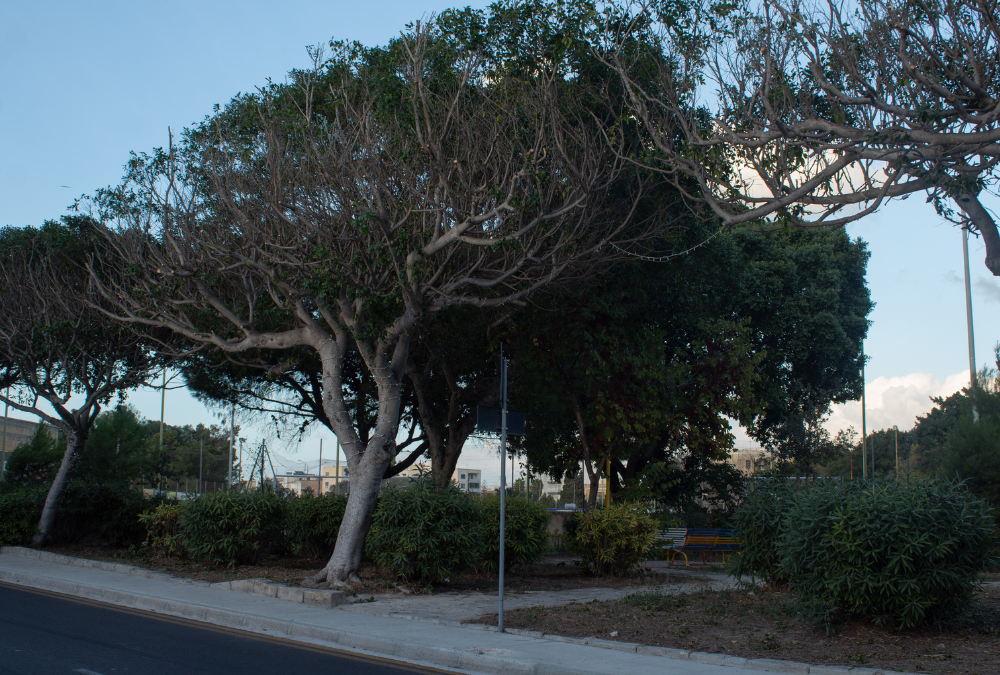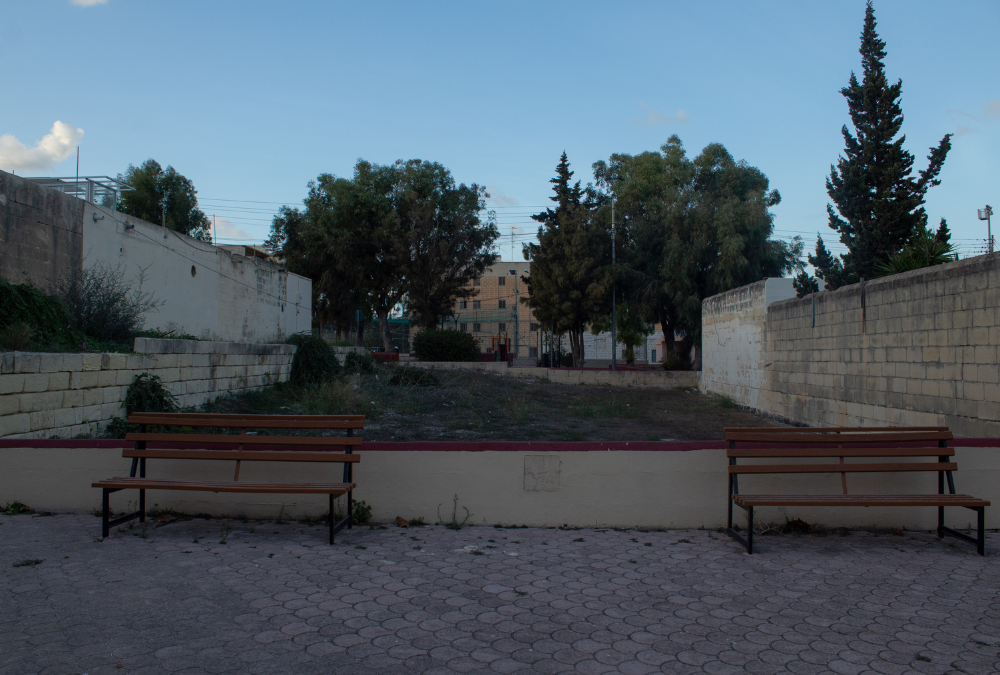This is an investigation that is split into a total of four separate articles. This article is the introduction, and should be read first. The links to the other parts of the investigation can be found at the bottom of this article.

The Maltese locality of Santa Luċija, a pet project from prime minister Dom Mintoff’s time, is set to be ransacked by individuals who have huge influence within the Labour Party. This influence, fueled by overlapping interests between loyalists within the party’s ranks and the party’s financiers, implies the writing is on the wall for the small town that is home to around 2,600 people.
***
All eyes were set on the tiny locality ahead of Friday 26 January, as the Planning Authority’s commission (PA) was set to make a decision on a massive development that is set to take up the last green lung left in the neighbourhood. The PA’s case officer who reviewed the file already recommended the development for approval, in spite of hundreds of objections that came pouring in from residents who wish to preserve the serenity of their surroundings.
The decision was postponed three days before it was set to be taken. The commission decided that, given the size of the development, the decision should be taken by the PA’s board instead. No date had been set by the time this investigation was published.
But, the fact is that the situation is much more complicated than just one major development that is being heavily pushed forward by a major developer and an architect who conveniently also holds the position of deputy leader for party affairs within the Labour party. It is just one of three oversized projects proposed in the town, projects which the residents fear will alter the character of their beloved home forever.
While the Labour Party still enjoys a strong influence in the area, obtaining over two-thirds of the votes in the entire district during the last general elections, its popularity in Santa Luċija is buckling beneath the pressure of its irate residents, and with good reason.
The locality is tucked away on the corner of two major arterial roads: Tal-Barrani road and Triq Ħal Luqa. Idyllic country roads which were recently resurfaced with tarmac meander through a few agricultural fields on the south side of the village. A brief note on the local council’s website details the equally brief history of the locality since the very first buildings were constructed in 1955, the first year Mintoff’s Labour Party took charge of the Maltese government as the country slowly began to enter the twilight years of its time as a British colony.
“Notification No. 318 which appeared on the Government Gazette of the 7 July 1961 read as follows: ‘It is hereby notified for general information that the new community centre at Tarxien, which is broadly bounded on the East by the Tarxien By-Pass and on the North by the Luqa By-Pass shall take the name “Santa Luċija” after the ancient chapel which is situated nearby’.
(…)
Until the first few years that followed World War II the Santa Luċija area was nothing more than a number of fields. The only buildings one could find were two small fireworks factories belonging to Tarxien and Gudja.”
Eventually, Santa Luċija became one of the only places in Malta that was spared the onslaught of development we see in most localities today. The philosophy of the socialist vision which brought it to life permeates the design of the locality to this day – gorgeous trees and pretty gardens adorn every street, low-lying buildings ensure that sunlight reaches every nook and cranny, and heaps of open spaces provide for plenty of breathing room for residents of a town that is bordered by heavy traffic on one side and a handful of acres of agricultural land on the other.
However, the residents’ hopes that they just might manage to keep over-development at bay have been deteriorating rapidly over the past few years.
A major football complex is being proposed by the local football club, one which would dwarf the current, humbler football pitch that is already on the site. In spite of overwhelming opposition to the project, which is set to lead to the loss of dozens of mature trees and is going to permanently blot the serene character of its surroundings, the Planning Authority approved an outline development permit for it in June of last year.

One of the many trees that is set to removed to make way for the proposed Santa Luċija football complex. Photo: Julian Delia
Another huge development that is set to eradicate more mature trees and permanently erase one of the locality’s most important green spaces is being proposed near Triq Katerina Vitale. It is the same project which was set to be decided on this month but whose PA hearing was postponed three days before the hearing was due.
The developer behind the project is Anton ‘Tal-Franċiż’ Camilleri, a shadowy figure with intimate ties with economy minister Silvio Schembri. Camilleri made the headlines following the government’s scandalous decision to accommodate his proposal to develop a massive €305 million high-rise project in St George’s Bay by issuing a tender that was so specifically tailor-made for the development it was flagged by an internal Lands Authority audit.
To add insult to injury, the architect for the project proposed by the developer is none other than Labour Party deputy leader for party affairs Daniel Micallef.

A photo of the site where the massive project being proposed by Tal-Franċiż would be built. Photo: Julian Delia
Bearing the telltale pride of someone who is willing to protect their territory, the residents have not taken it lying down. In fact, they’ve already experienced a significant degree of success when a proposal for a five-storey building in Triq il-Ġibjun was successfully thwarted after a resident, Michael Pule’, sounded the alarm about it. They successfully pursued the case in court by arguing that the development would have breached planning guidelines that protect the identity of the surrounding environment.
At the forefront of the opposition towards major developments is Nationalist Party local councillor Liam Sciberras, a lawyer by profession who’s spent the last eight years at odds with the rest of the local councillors. All other members of the local council – mayor Charmaine St John, vice-mayor Frederick Cutajar, councillor Terrence Ellul, and councillor Kylie D’Amato – were elected on the Labour Party ticket.

Nationalist Party local councillor and lawyer Liam Sciberras. Photo: Julian Delia
The findings of this investigation show that all four Labour Party councillors failed to consistently protect the interests of their residents, a fact which Sciberras has turned into his battle cry. Not content with just failing to stick up for their constituents’ unequivocal call for these developments to be scrapped, the four PL councillors even went as far as proposing their own five-storey development slap bang in the middle of an untouched plot of land a few metres away from the church.
While the local council unanimously opposed the development being proposed by Tal-Franċiż, residents told this website they find it hard to trust the council to adequately safeguard their rights considering that they only opposed that major development after explicitly overruling residents’ opposition towards both the football complex project and the council’s civic centre proposal.

The site where the local council’s proposed civic centre is set to be built. Photo: Julian Delia
Following a few weeks of in-depth analysis of these plans and extensive interviews, below you may find a summary of the conversations I had with Sciberras and three residents who brought this website’s attention to the extent of the ongoing development as well as their suspicions of foul play being involved in the planning process. I also reached out to the Labour Party’s representatives on the local council as well as the party’s deputy leader for party affairs, the housing authority, a representative for Camilleri, and Santa Luċija’s football club.
By the time this investigation was published, none of the target entities in this story responded to our questions in spite of a clearly stated deadline and multiple attempts at establishing contact.
This is the story of how the Labour Party, in its mad descent into chaos that is fueled by money and power, betrayed its own heartland.


